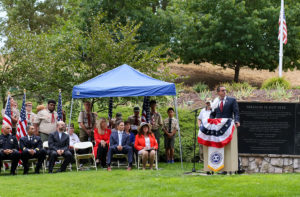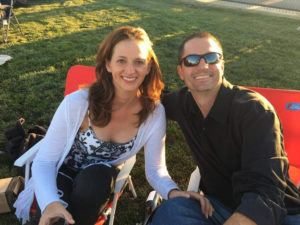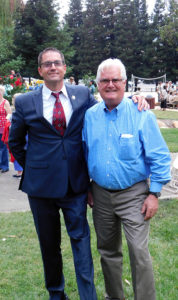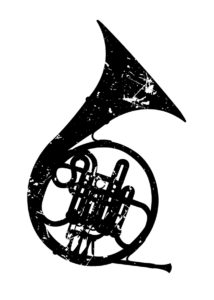An old, old story tells of a young man rushing down the street in New York. He sees an older, more mature man and excitedly asks, “How do I get to Carnegie Hall?” The older man slowly answers, “Practice. Practice.”
The question could also apply to AT&T Park, Levi Stadium, Oracle Arena or any other sports venue. The answer could also include, “Dedication and discipline.” Of course, a little natural talent also helps.

When I was young I loved participating in sports, especially basketball, softball, table tennis, baseball, badminton, and tennis. I loved participating, but discipline, dedication, and practice were not in my vocabulary or my personality. Do not worry, this will not be about my triumphs and great moments in sports, but rather about lessons I learned, my enjoyment, and some defeats. Whatever skills I had can now be found in my personal rear view mirror and getting up from the couch and walking across the room require Herculean effort–well, almost Herculean.
DISCRETION: When I was a senior at Washington High School in Los Angeles, then a virtually all white school, some buddies and I drove over to Fremont High, a virtually all black school that kept its gym open well into the evening. We went to shoot a few hoops. I was guarding a young black man and he was guarding me, but he kept doing little tricks that got beyond annoying rather quickly. He would pinch, poke with his fingers and open hands, and pretend to spit at me. I lost my temper and used an old trick involving my rather strong hips to knock him to the floor. He quite loudly accused my mother of having four legs, a tail, and being quite hairy. The entire gym suddenly quieted and all eyes were on the black guy on the floor and the white guy who put him there. The tension was palpable.
I did not want an evening of fun to develop into a race riot, especially when I was in a distinct minority. I had to act and act quickly, so I went over to my nemesis, put out my hand, and said loud enough for most everybody to hear, “Sorry, it was my fault,” and I helped him up. The tension immediately dissipated and the usual gym noise returned. We both continued playing hard, but there were no more incidents.
A quick word about the man who taught me how to use my elbows, knees and hips as both offensive and defensive weapons. When I was thirteen my family moved to Atlantic City, NJ. I had never played basketball prior to moving there. For some reason one of the NBA players who worked out there decided to help this stranger to a basketball court. He taught me how to protect myself, with sometimes a good offense being the best defense. He was a little man, about 5’ 7” but as fast and cool a player as I have ever seen. I never saw him off the court, and why he taught me so thoroughly I will never know. Some of you may have heard of him: Red Klotz. He became the most losing coach in the history of sports because for over thirty years he was the playing coach for the Washington Generals who played against the Harlem Globetrotters. According to Wikipedia he played until he was 68 years old, won two games against the Globetrotters, but he lost over 14,000.
KNOW WHEN TO SHUT UP: As a theater student who also loved sports, I was chosen to be the public address announcer at my community college, then called junior college, football games. We had a miserable team and had won one game all season. In the closing minutes of the final game we were behind, but down to the opponent’s 16 yard line with time running out. The quarterback threw a pass which was intercepted and run back 84 yards for a touchdown. Over the loud speaker I stupidly and hurtfully said, “Oh, well, you can’t win them all.” At which point our entire bench turned to face the booth as if they had been choreographed and some sixty players saluted me–with one finger. The band director who was also an assistant dean suggested that I might want to stay home the following Monday. I still have not fully mastered the lesson of knowing when to keep my mouth closed.
HUMILITY: Although I never had any coaching or formal training, I was always a fast runner. While at a special school in the Army at Ft. Benning, GA, our barracks were about 150-200 yards from the “Beer Garden.” Several men in my company had run track in high school or college, and when we visited the “Beer Garden,” they would challenge me to a race. I have tried beer several times and just do not like it, so winning would get a beer for the others, a pint of ice cream for me. In the four months we were there, I never bought a beer, and I had a lot of ice cream.
One Saturday, however, one the trackmen and I were running just for fun. A young soldier came up to me and said, “You’re fast. Want to race?” Confidently I agreed. We both were wearing green fatigues, and when the starter yelled, “Go!”, he exploded as if shot from a rocket launcher. All I saw was the back of his uniform. When the rest of our group got to us, one of his friends asked if I knew whom I had just raced. I did not. “Oh, he’s Curtis Cooksey and he holds the world’s high school record for the hundred yard dash.” Mr. Cooksey and I shook hands, and I had a small dose, albeit temporary, of humility.
HISTORICAL DRAMA: In October of 1957 I was on the public address system at a high school basketball game at the school where I was enjoying my first teaching experience. During the game one of my students came over to me, held up a portable radio, and said, “Listen.” All I heard was a strange “Beep–beep–beep.” The student explained what it was, and I in turn asked everyone to listen during a time out. It was, of course, the Soviet Union’s Sputnik, the first human made satellite in space marking the beginning of the “Space Age.” Who won the game? I have no idea.
THE BIG THRILL: Perhaps the most exciting time I ever had connected with sports occurred when I was not a participant, not an announcer, but simply one of 35,000 spectators at Dodger Stadium to see Sandy Koufax pitch against the first year New York Mets. Better actors learn quickly to “feel an audience” and respond to the audience’s responses. It is a lesson he or she carries over into being a member of the audience. On June 30, 1962, those of us among the spectators all began to notice that the Mets had put up a lot of goose eggs by the fifth inning. By the sixth or seventh the throng was unusually quiet and anticipatory, yet few would discuss it. The crowd hushed by the end of the eighth and everyone wanted to get to the top of the ninth when the Mets would bat. The hometown Dodgers had a comfortable lead, but few cared about that.
As those of you who know baseball probably realize, Koufax was on the verge of his first no-hitter. 35,000 of us began breathing as one body. With each pitch we inhaled as the ball left Sandy’s hand; we then held our collective breaths until the pitch was called a ball or a strike or foul, Twice the ball was put into play and resulted in an out. If I remember correctly some fifty-five years later, I think Koufax issued one walk in the ninth. When pinch hitter Gene Woodling came to bat, each pitch had all 35,000 standing and inhaling together, holding our breath together, then exhaling a sigh together. On the final pitch, it was inhale, hold, and then explode as one body. Johnny Roseboro, the catcher, raced to the mound and threw his arms around the beaming pitcher. We all wanted to do the same, but it was a quieter, more sedate time.
On the shelf above the computer desk where I am writing this, there is a gold (not real gold), small picture frame with a fifty-four year old ticket stub in it. The stub reads “Dodger Stadium/June 30, 1962, RESERVED $2.50.” No, that is not a typo: the reserved seat cost $2.50 back in 1962.
Exciting? Good? Please do not tell any of my former English students, but “It don’t get no better than that.”










